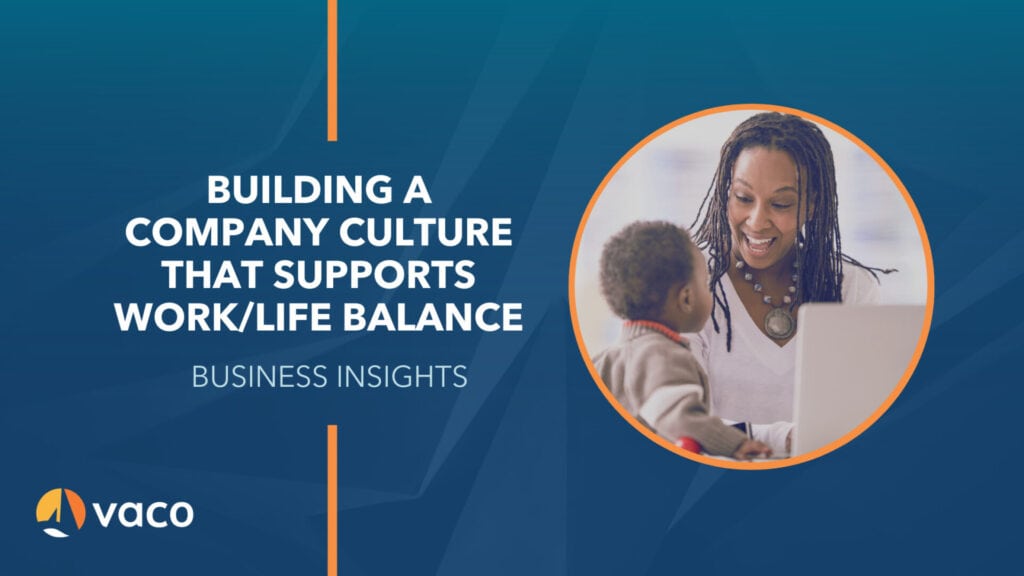To support work/life balance, companies need to think bigger than office amenities and employee perks. Genuine work/life balance hinges on an organization’s culture and the practices that are implicitly and explicitly supported by leadership.
Conversations around the employee experience in the U.S. have undergone sweeping changes in recent months. As employees have shifted their professional priorities and desires, they feel empowered to leave jobs that don’t meet their needs. In response, employers have had to reckon with unsustainable expectations.
As the effects of a toxic company culture and work-related stress have become more widely publicized, employees are speaking out about the importance of work/life balance and compassionate corporate leadership.
For companies, it’s no longer enough to offer unlimited PTO or support hybrid work. Employees expect their organizations to display a deeper commitment to the health, happiness, and well-being of their team members. They want to work for companies where work/life balance is ingrained in the value system and culture.
Here are a few essential ways to make healthy work/life balance a part of company culture.
Our Author

Rachael Hensley, SHRM-CP is a human resources coordinator at Vaco in Nashville.
Encourage managers to lead by example
For work/life balance to truly become a part of your company’s culture and values, every leader—from the executive team to mid-level managers—should model work/life balance for their team members.
- Train managers to understand work/life balance and why it’s important. Focus specifically on helping them recognize the signs of unhealthy stress and burnout, in both themselves and in their team members. A manager that knows to step away and regroup when their stress is becoming unmanageable will set a valuable example for employees.
- Encourage managers to use their PTO and take “just because” time off. Doing so will show employees it’s okay to take time off when they need to recharge, not just when they have a doctor’s appointment, event, or vacation scheduled.
- Help managers create boundaries between their own work and personal lives, i.e. establish set work hours and limit email activity after 6:00 PM.
- Ensure that managers feel supported in pursuing their hobbies, spending time with their families, and practicing self-care. Give them the flexibility and support to fulfill their family responsibilities and engage with their personal interests—and encourage them to do the same with their own team members.
Read more: Updating your management style for the post-pandemic workplace
Build a work environment that prioritizes physical, mental and emotional wellness
Pandemic-related stress left many employees at a tipping point with their mental and emotional health. In a 2020 survey of 12,000+ employees and managers, a staggering 78% said the pandemic negatively affected their mental health. Of those respondents, 85% shared that workplace stress during the pandemic caused sleep deprivation, physical health problems, and increased isolation from family and friends. A further 75% said they felt their employers should be doing more to protect their workers’ mental health.
For many organizations—even those with existing corporate wellness initiatives—the pandemic served as a wake-up call: to have a meaningful impact on the health and well-being of employees, wellness initiatives need to address physical, mental, and emotional health.
Here are some practical ways organizations can create work environments that support their employees’ overall quality of life:
- Perform a company-wide assessment of worker well-being: A well-being assessment can highlight the gaps between employee needs and current organizational resources. The NIOSH WellBQ, produced by the National Institute of Workplace Health and Safety, is a 15-minute questionnaire that covers multiple aspects of employees’ quality of life, both inside and outside of work.
- Provide an office space centered on the employee experience: After the pandemic, an employee-centered office space no longer means bean bag chairs, air hockey tables, and beer on tap. Instead, employees are more likely to value updated technology and comfortable seating, “focus” spaces that offer privacy and silence, and outdoor areas where they can get sunshine and fresh air during the work day.
- Develop policies to help employees manage their workloads: In companies that are chronically understaffed, burnout is always a threat, regardless of the office amenities or fringe benefits employees receive. If hiring additional staff isn’t an option, consider working with each employee to build a roadmap for their job responsibilities. Make sure you’ve clearly categorized high, medium and low-priority work and reduced or eliminated repetitive, low-value tasks. Invest in time-tracking and project management software to help employees better allocate their time.
- Cross-train team members: Many employees struggle to take adequate PTO because no one else on the team can do their job. Companies can reduce this source of burnout by ensuring that teams are cross-trained on one another’s basic responsibilities and projects.
Provide true workplace flexibility
Flexibility is perhaps the most important piece of the work/life balance puzzle. It has been linked to positive outcomes in workers’ sense of’ well-being, as well as their mental health, satisfaction, engagement, and quality of life. It ranks high on job seekers’ lists of things they’re looking for in their next job. It is often the difference maker in a company’s ability to retain its employees.
Despite this data, many organizations still struggle to align a flexible work program with team member expectations and the company’s needs.
One example: imagine a company where all employees work from 9-5 in the office on Tuesdays and Thursdays and from 9-5 remotely on Mondays, Wednesdays, and Fridays. At first glance, it can certainly look like this company offers flexibility; after all, they allow their employees to work remotely for a large part of the week. Upon closer inspection, however, this work arrangement isn’t very flexible at all. Employees are still boxed into a very specific work schedule and location—and both are determined by the company.
What does a flexible workplace look like?
When an organization understands and values flexibility, its employees are empowered to choose the work environment and schedule that fits their needs, and to adjust that environment as those needs change.
It’s more than managers saying “yes” when a team member needs to work from home or leave early to pick their child up from school. It’s an environment of trust and autonomy, where employees are empowered to do their work and produce results, and employers measure their team members’ success by outcomes instead of activities. It’s an environment where remote leaders have the opportunity to engage in ad-hoc discussions that influence strategy.
A company culture that supports work/life balance—and by extension, flexibility— acknowledges an essential, but often overlooked, truth: employees are human beings. Throughout the course of their careers, they may get married, have children, become a single parent, face a traumatic injury, develop a health condition, or become caregivers for their own parents. As these life changes occur, a work model that once benefitted them may begin to hold them back. When a workplace is truly flexible, it shifts with employees to ensure that they continue to thrive through every stage of their careers.
Have questions about improving company culture and work/life balance at your organization? Vaco is with you all the way. Explore our resources page for more in-depth articles on the employee experience, recruiting strategies, and building a better workplace.
About our author:
Rachael Hensley, SHRM-CP is an HR specialist at Vaco in Nashville. Connect with her on LinkedIn.
